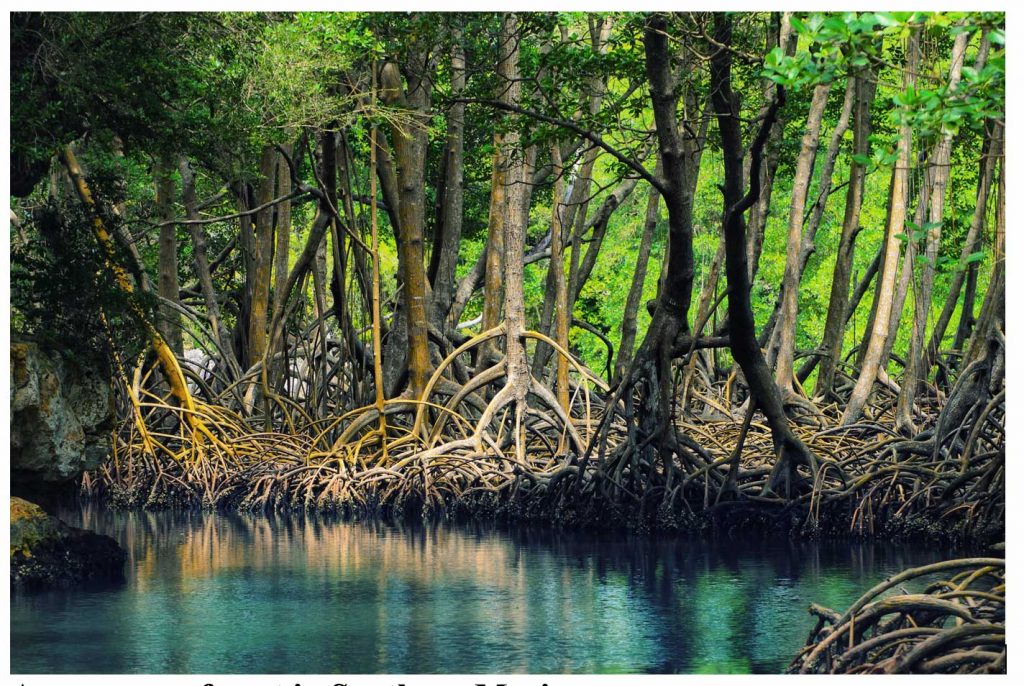When It Comes To Carbon Sequestration, Mangroves Are Super-Trees

As explained here, the simple answer is that as they grow, older parts of the trees fall off, sink to the bottom of the bogs in which they grow, and get trapped under mud as much as 20 feet beneath the surface, where they remain undecayed for millennia, due to the lack of oxygen.
Indonesia, by virtue of its incredibly long coastlines (34,000 miles around 17,000 islands) and its proximity to the equator, is the mangrove capital of the known universe. Yet, needless to say, mangroves are endangered, especially from the demand for palm oil. Strict regulations are in place, restricting agriculture from 650 feet from the mean high tide lines, but they are largely ignored.
